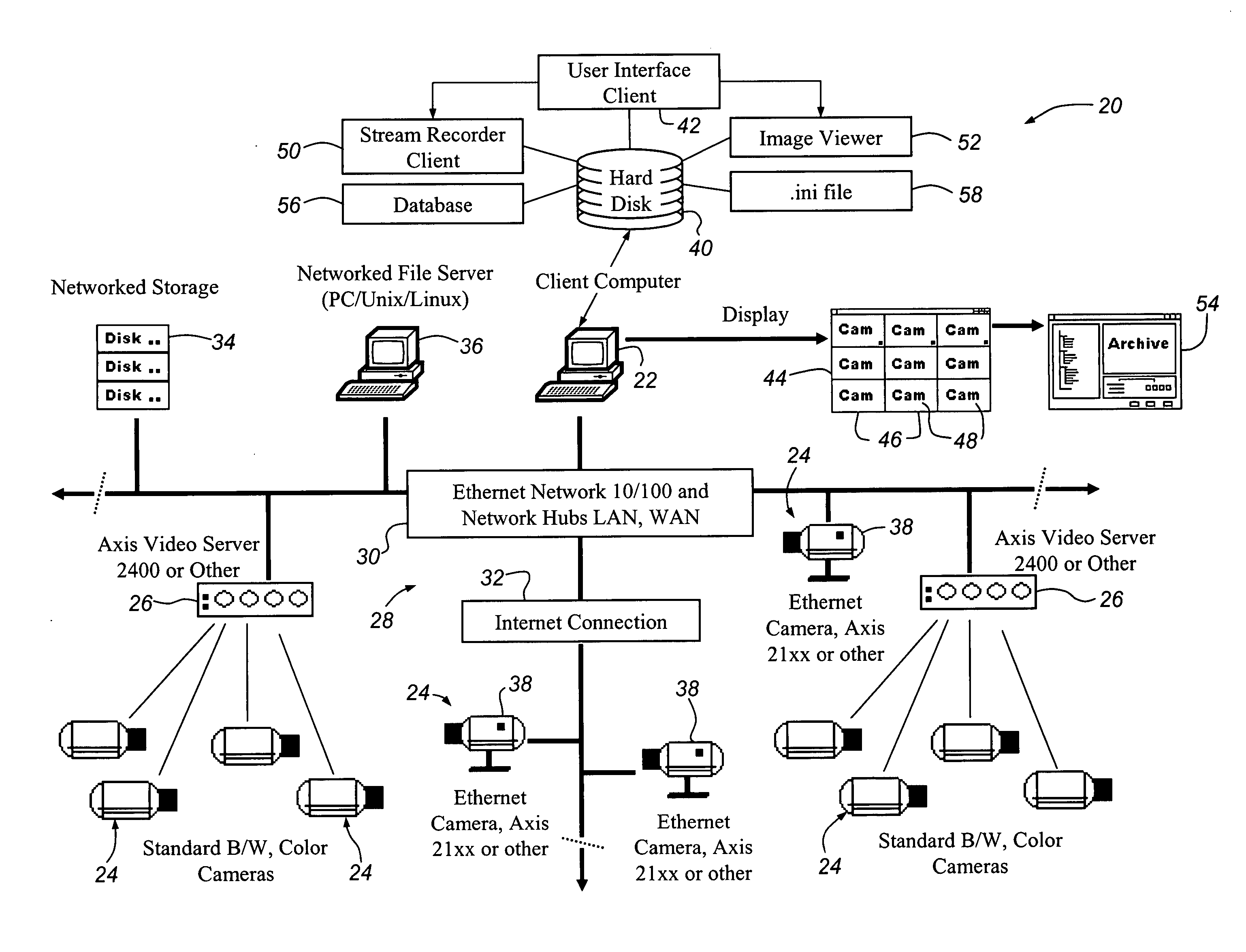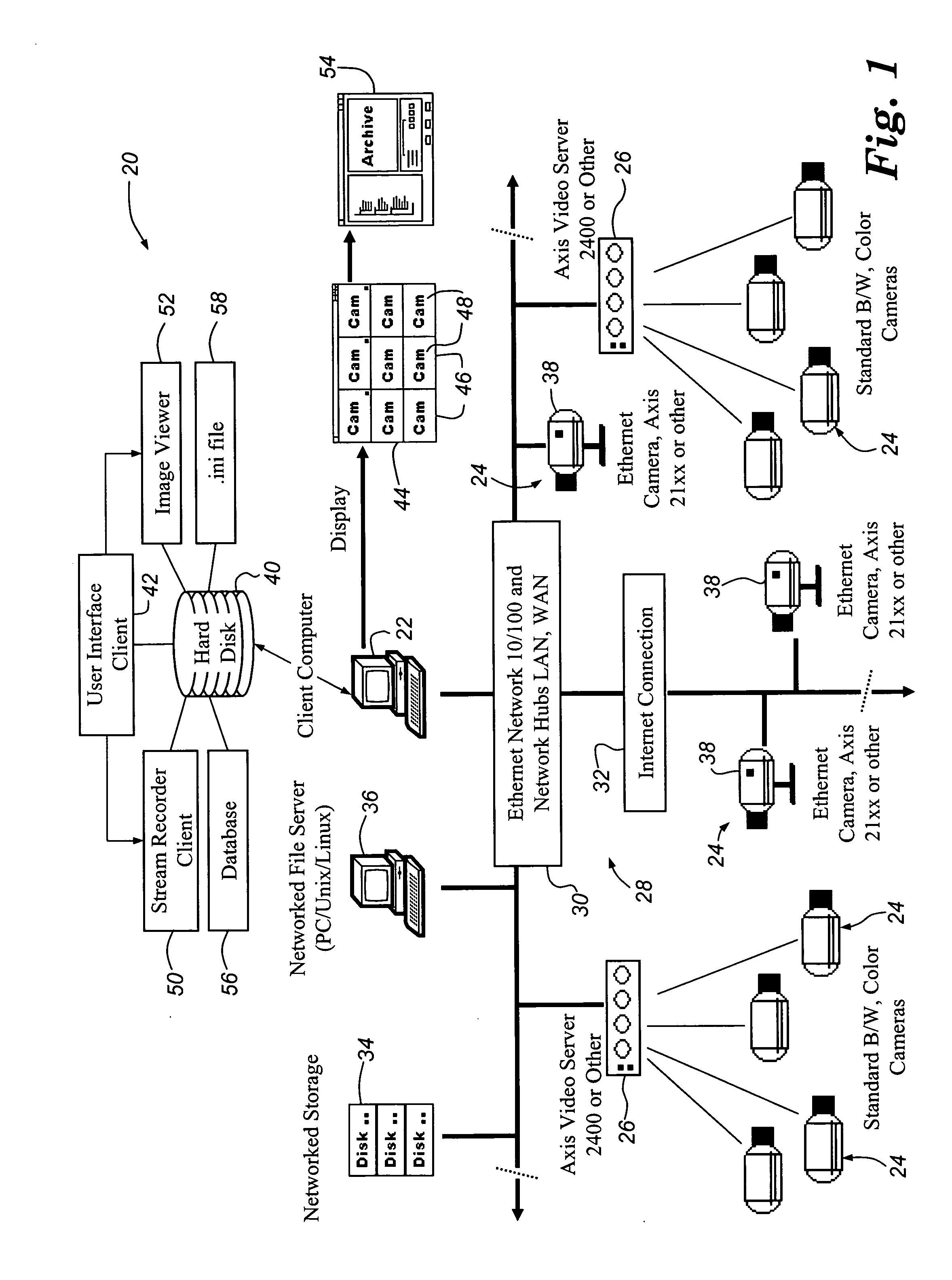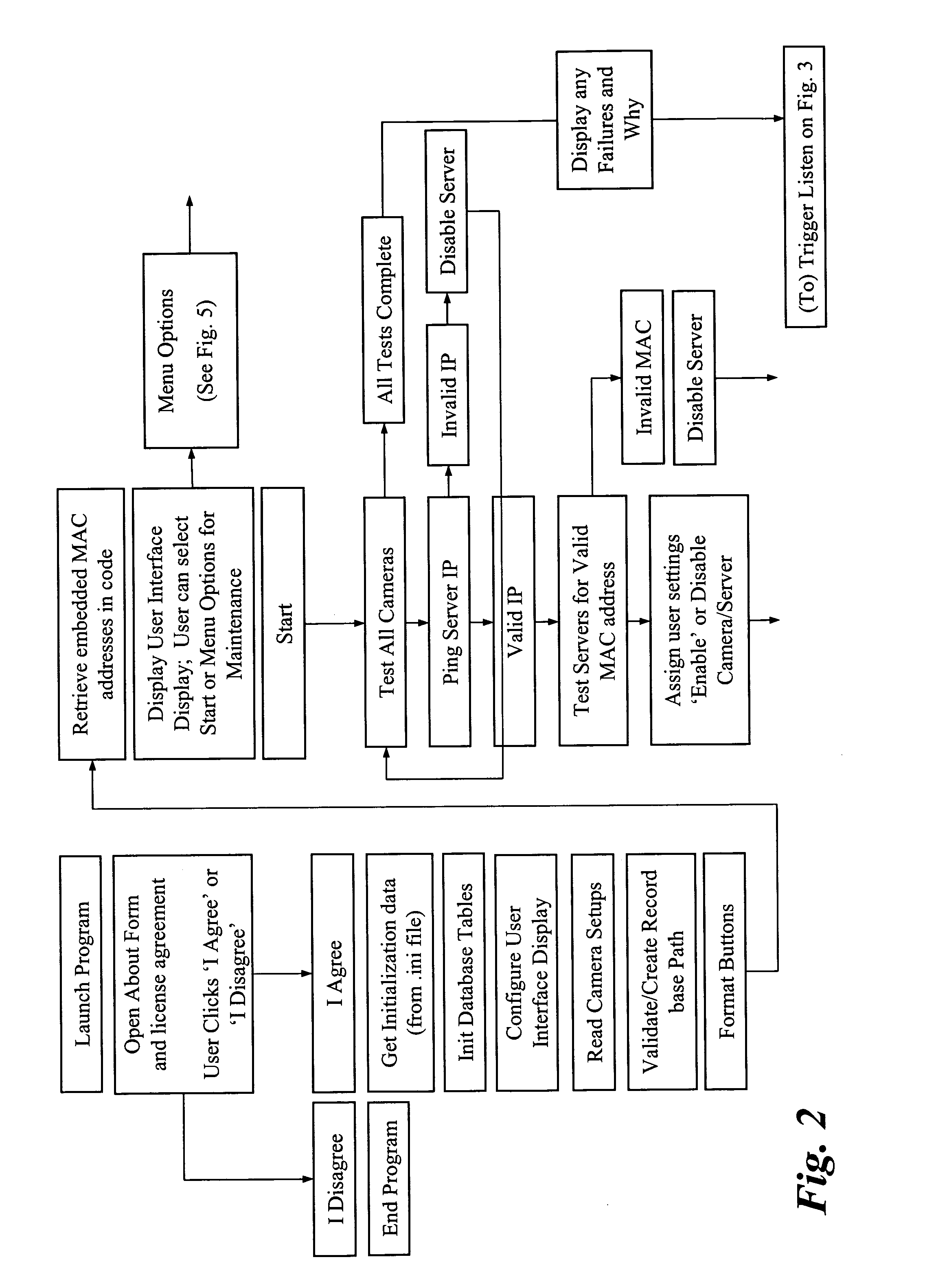Digital video system using networked cameras
a video system and network camera technology, applied in the field of digital video systems using network cameras, can solve the problems of increasing the total cost of implementing such systems, introducing additional limitations, and requiring a large amount of equipmen
- Summary
- Abstract
- Description
- Claims
- Application Information
AI Technical Summary
Benefits of technology
Problems solved by technology
Method used
Image
Examples
Embodiment Construction
[0036] Referring to FIG. 1, there is shown a network setup of a digital video system 20 of the present invention. The video system 20 includes a client computer 22, a plurality of cameras 24, and one or more standalone video servers 26. The client computer is connected to the cameras 24 and video servers 26 via a network 28 which can include a private network segment 30 and a public network such as the Internet 32. Other networked components can be used such as a networked storage device 34 and a networked file server 36. Some of the cameras 24 comprise camera servers 38 which include both a video server and camera in a single integrated unit. The camera servers 38 can be, for example, Axis™ 200, 200+, or 2100 Ethernet cameras, available from Axis Communications Inc., Chelmsford, Mass. (www.axis.com). The video servers 26 can be Axis™ 2400, 2401, or 240 video servers, also available from Axis Communications, Inc. The cameras 24 that are connected to the video servers 26 can be indus...
PUM
 Login to View More
Login to View More Abstract
Description
Claims
Application Information
 Login to View More
Login to View More - R&D
- Intellectual Property
- Life Sciences
- Materials
- Tech Scout
- Unparalleled Data Quality
- Higher Quality Content
- 60% Fewer Hallucinations
Browse by: Latest US Patents, China's latest patents, Technical Efficacy Thesaurus, Application Domain, Technology Topic, Popular Technical Reports.
© 2025 PatSnap. All rights reserved.Legal|Privacy policy|Modern Slavery Act Transparency Statement|Sitemap|About US| Contact US: help@patsnap.com



